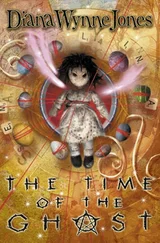The greatest strength of this theory is its ability to annoy Darwinists. Hundreds of scientific papers have been written in support of or against the idea. One important problem is that of time-scale. What might appear an instant to a geologist can seem an eternity to a biologist. A 'jerk' between one species and its successor may encompass tens of thousands of years; nothing in terms of geological epochs, but more than enough generations to allow gradual evolution to make fundamental changes. Those opposed to creeping advance point out, quite fairly, that most species do not change at all through their evolutionary career, which is not what Darwin would have expected.
Whatever the merits of each doctrine, the human fossil record has so many gaps that there is just not enough information to tell whether humans evolved suddenly or slowly. The remains are so sparse that it is quite possible that relics of the lineage that led to the peoples of today are as yet undiscovered. Fossils are the best of all evidence that we did evolve, but cannot tell us much about how that evolution took place. They do show that the attributes which make us what we are arose bit by bit, seen first in a remote ancestor and reaching completion {if indeed they have) only in the past hundred thousand years or so. No single primate awoke out 1morning ro find itself human.
Tilt* central problem in using the dead to recreate history is that we can never be sure that any fossil left a descendant. Our extinct predecessors are just that: extinct. This makes it difficult to work out their relationships to each other and to ourselves.
Another window has opened onto the past. Every modern gene descends from times long gone. The connections between humans and primates are preserved in the DNA of living animals. Darwin himself saw better ways to reconstruct history than to depend on the frozen accidents of fossilisation. His own claims about our predecessors used indirect evidence (such as a comparison of the anatomy of humans with that of apes). Nowadays this evidence is much more complete and has painted a new portrait of our ancestors.
Molecular biology is just anatomy writ small, plus an enormous research grant. To a geneticist, everyone is a living fossil and contains the heritage of his or her predecessors. Genes recreate the ancient world. 'Man' — Darwin said — 'still bears in his bodily frame the indelible stamp of his lowly origin.'; or, as W. S. Gilbert put it: 'Darwinin-ian man, though well-behaved, is really just a monkey shaved.' Genetics allow us to search for who that shaved monkey may have been.
Bones show that humans are more related to apes than to monkeys and that their closest kin lie among chimps, gorillas and orang-utans. Anatomists once assumed that Homo sapiens must be quite distinct. Often, it was contrasted with these "great apes 1. We differ from them in obvious ways — brain size and hairiness, for example, and in other talents. Most people are righthanded and the patterns of breakage of stone tools suggest that our ancestors were the same. Individual chimps and gorillas may use one hand rather than the other, but about half the animals prefer left and half right. The human brain, too, is asymmetrical and it is more than a coincidence that speech and language are coded for on only one side.
It is hard ro measure how much genetic divergence a difference in hairiness or handedness might represent and such comparisons are not much use as a test of the biological gap between apes and humans. DNA docs a better job. Men, apes and monkeys share many genes. We vary both in the way we taste the world, and in how we see it. In suinc monkeys, many of the males are red-green colour-blind. Chimps have A and O blood groups, while gorillas are all blood group B. About a thousand distinct stained bands can be seen in the human chromosome set. Every one is also found in chimps. The main change is nor in the amount of chromosomal material but in its order. Many of the bands have been reshuffled and two chromosomes are fused together in the line that led to humans. We have forty-six chromosomes in each cell, while chimps and gorillas have forty-eight. Pope John Paul in 1996 referred to an 'ontological discontinuity' between humans and apes. Perhaps that moment was marked by the fusion of ape chromosomes 1 and 2., with the human spirit coded somewhere on its amalgamated equivalent.
At the DNA level, too, (and forgetting issues of ontology) there has been little physical change. In one of the haemoglobin pseudogenes, the 'rusting hulk' of a gene (a structure that accumulates many mutations as it has no function), humans are about 1.7 percent distant from both chimps and gorillas, 3.5 per cent from orang-utan and 7.9 per cent from rhesus monkeys.
To sort out man's place in nature we need to combine information from as many genes as possible. DNA hybridisation, crude as it is, does just that. The method depends on the extraordinary toughness of the DNA molecule and its overwhelming desire for togetherness; for each strand to pair with a sequence which marches its own.
When a double helix is heated up it separates into two individual strands, each of which bears a matching set of the four bases. As the liquid cools, the strands come together, A with T and G with C, to reconstitute the original paired structure. If DNA from two different species is treated in this way, some of the single strands from each one form a hybrid molecule that contains one strand from either species. The more related they are, the more similar their DNA and the tighter the fit. If the strands are very similar, they stay together even at high temperatures but, if they share fewer sequences, are less stable. The temperature at which the hybrid melts hence estimates how alike the two DNAs must be and gives a measure of their relatedness. DNA hybridisation has already sorted out some thorny problems of classification. Thus, it shows that the nearest relatives of New World vultures are storks, rather than the vultures of the Old World.
The results from primates are remarkable. Humans and chimps share 98.4 per cent of their DNA, rather more than either does with the gorilla. The orang-utan is not so related and New World monkeys even less so. Any idea that humans are on a lofty genetic pinnacle is quite wrong. For a series of functional genes, the DNA sharing between ourselves and chimps is as much as 99.5 per cent, with the gorilla further out on the same limb. A taxonomist from Mars armed with a DNA hybridisation machine would classify humans, gorillas and chimpanzees as members of the same closely-related biological family — indeed, he might count all three as so similar as to share the Latin name Homo, once seen as unique to ourselves.
Humans and chimps are not, needless to say, just minor variants on the same theme. Evolution involves more than overall change in DNA. The Hawaiian islands have more species of fruit fly than anywhere else in the world, with a vast diversity of form. One looks like a hammerhead shark, with huge protuberances on either side of its head. DNA hybridisation shows that this wild evolutionary euphoria is accompanied by almost no change in the genetic material.
Brains and behaviour are what separate humans from any other animal. Since the split from chimps, the brain has added about a thousand cells a year. The human brain is five times larger than would be expected for a typical primate of the same size. The genes involved lose their importance in a measure of average genetic difference; and the brain itself produces a whole set of intellectual and cultural attributes that appear once a crucial level or intelligence has been reached and are not coded for by genes at all.
Somewhere in that brain, or what it is thinking, is what makes us different. Although it shares most of its DNA with humans, no chimp can speak. Some claim that they can manipulate symbols in a primitive 'language' (and trained parrots can do almost as well). The attempt to show that apes might talk is one of the great blind alleys of behavioural research. Samuel Butler's comment on a Victorian attempt to teach a dog sign language makes the point: 'If I was his dog, and he taught me, the first thing I should tell him is that he is a damned fool!' To make too much of the shared DNA of chimps and humans is to be in danger of the same foolishness. Humans, uniquely, are what they think.
Читать дальше
Конец ознакомительного отрывка
Купить книгу












